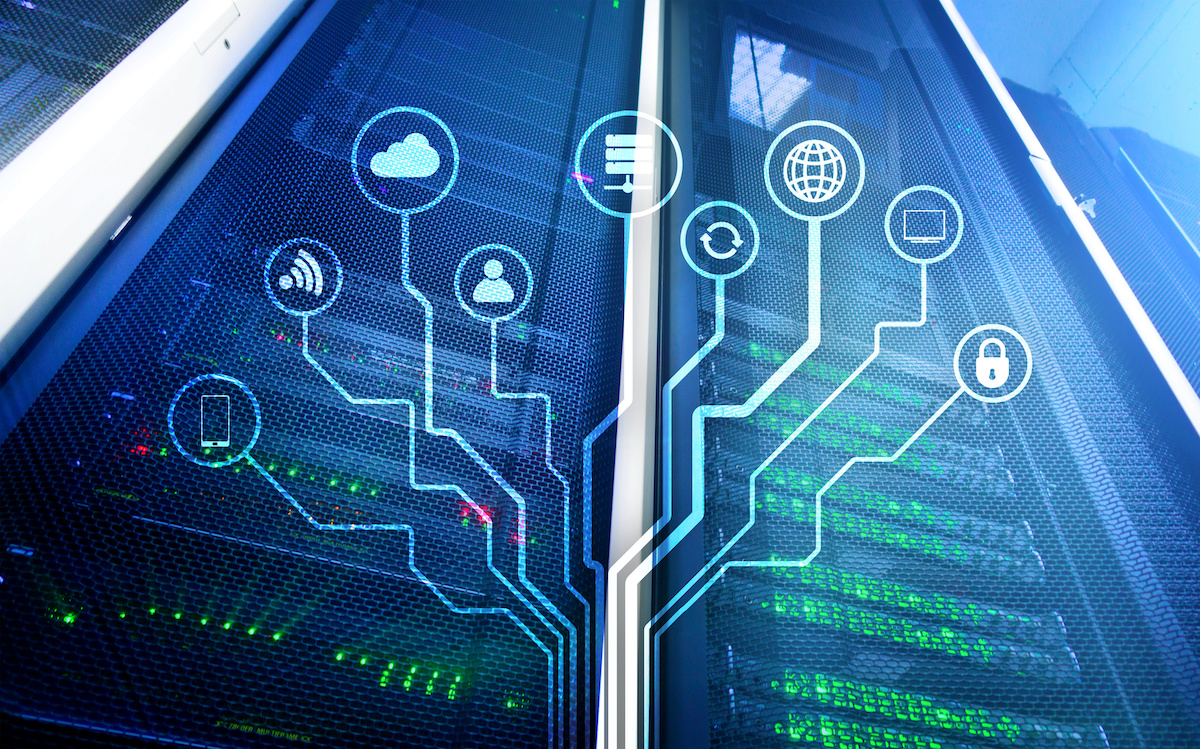How Real-Time Data Trends Will Influence Data Centers19 min read

What started as the Internet of Things (IoT) is now very much the Internet of Everything. It’s difficult to find an aspect of society not impacted by internet-connected devices and the data they collect. Now, however, numerous real-time internet applications exist. When using these systems, people want insights immediately, not hours — or even minutes — later.
Real-time data requires data centers to increase their storing and processing capabilities. Plus, as more customers have real-time workloads handled by data centers, these facilities must ramp up their server power and cooling capabilities to avoid preventable problems that cause outages.
Of course, all data center customers demand near-constant uptime and any downtime associated with real-time data applications could be particularly catastrophic.
The trends below illustrate why there’s a direct connection between real-time data and the future of data centers. The facilities that can’t meet real-time data requirements will struggle to compete.
Real-Time Data Can Optimize Data Center Performance
Although real-time information can tax the facilities not equipped to handle it, that kind of information may also boost functionality. More specifically, real-time monitoring can help data centers lower their power usage and operating costs by analyzing data in real-time and providing actionable recommendations for optimizing the infrastructure.
Tracking in real-time also enables data center managers to better assess when to remove and replace old equipment before it becomes obsolete or breaks down.
Furthermore, according to one analysis the modern data center’s power and cooling infrastructure has approximately three times more data points or available notifications compared to the previous decade. If data center operators are able to receive remote notifications of a facility’s functionality in real-time, they’re better able to respond to issues promptly instead of hours or sometimes days after the fact.
Real-time data could also mean that facility managers transition from a calendar-based maintenance schedule to one where upkeep occurs based on a real-time internet portal that shows the condition of a piece of equipment at any given moment. Such a resource could also provide statistics that may offer data center managers clues about problems that could affect performance soon but are not imminent operational risks.
The Medical Sector Is Beginning to Embrace Real-Time Data
Medical professionals know that seconds can mean life or death for a critical patient. Not surprisingly, the intensive care units at many hospitals use real-time operating systems (RTOS) to support the care needs of the individuals they serve and make faster diagnoses.
A real-time operating system tackles resource management, data processing and application hosting immediately. Also, the memory footprints of an RTOS range from about 8K up to 2MB, the equivalent of approximately 3 to 700 plain, printed pages.
Experts believe real-time data could help solve the fragmentation that often hinders the health care sector. For example, during Hurricane Harvey, emergency dispatchers struggled to determine where to send their crews because it was challenging to ascertain which communities were the hardest-hit or required the most urgent assistance. Some used social media posts from residents to add context to their decision-making.
As such, the demands placed on data centers related to this trend may change when areas experience natural disasters. However, they could also rise in a more general way if hospitals continue to realize how much real-time data could improve patient outcomes.
Real-time data also comes from devices that consumers can quickly obtain. A recent study examined data from more than 47,000 Fitbit users, and researchers concluded it helped make real-time influenza predictions.
Real-Time Data Will Go Up As Cars Become More Autonomous
Connected cars capture a host of real-time data. The sensors they contain can tell a remote party the current status of windows, doors and interior lights, plus how much more charge an electric car has on its battery.
These vehicles already require data centers to prepare as more of them take to the roads around the world. The amount of information processed and stored will only go up as self-driving cars become more commonplace, vehicles that have sensors, artificial intelligence, lidar and cameras that help them understand the surrounding environment from moment to moment.
The cameras alone produce up to 5.4 terabytes of data an hour if they collect video at 4K quality. Most information will not go to the cloud and into distant data centers. Instead, it’ll get processed thanks to edge computing.
The connected car industry anticipates a future whereby vehicles can navigate with help from high-definition maps that update in real-time to show road conditions, such as potholes. Additionally, the automobiles that have connectivity features would “talk” to each other about the features of the road, helping each other avoid issues.
Due to developments like these, the potential of connected cars greatly depends on the future of data centers having the necessary infrastructure, plus the ability to scale without the risk of outages.
Other Examples of Real-Time Internet Connectivity
The examples covered here are far from the only applications of real-time data. Other areas where the need for real-time data is going up exist in manufacturing, helping companies respond more accurately to price quotes and proposals and enabling plant managers to see immediate performance metrics.
Many cities also have real-time crime centers, where law enforcement officers can respond within seconds to illegal activity. Many of these sites get data from thousands of camera feeds. For example, Chicago has 35,000 cameras spread throughout it, plus technology that gives details within less than a minute of gunshots fired.
These kinds of real-time data collection could drastically affect business operations or even lives if they fail. Thus, data centers must have the capability to deal with the increased workloads without risk of faltering.
Real-Time Data Will Continue to Apply in Today’s World
The trend of many connected devices collecting data puts more demands on data centers, requirements that will get more intensive with the need for real-time information.
Real-time data will continue to get more prominent, and facilities must be ready.
Real-time monitoring, data-driven optimization.
Immersive software, innovative sensors and expert thermal services to monitor,
manage, and maximize the power and cooling infrastructure for critical
data center environments.
Real-time monitoring, data-driven optimization.
Immersive software, innovative sensors and expert thermal services to monitor, manage, and maximize the power and cooling infrastructure for critical data center environments.

Kayla Matthews
Freelance Writer
Kayla Matthews is a technology journalist and data center writer whose work has been featured on Data Center Journal, Data Center Frontier, Data Center Dynamics and the vXchnge blog. To read more from Kayla, please visit her blog, Productivity Bytes.
Airflow Management Awareness Month 2019
Did you miss this year’s live webinars? Watch them on-demand now!







0 Comments